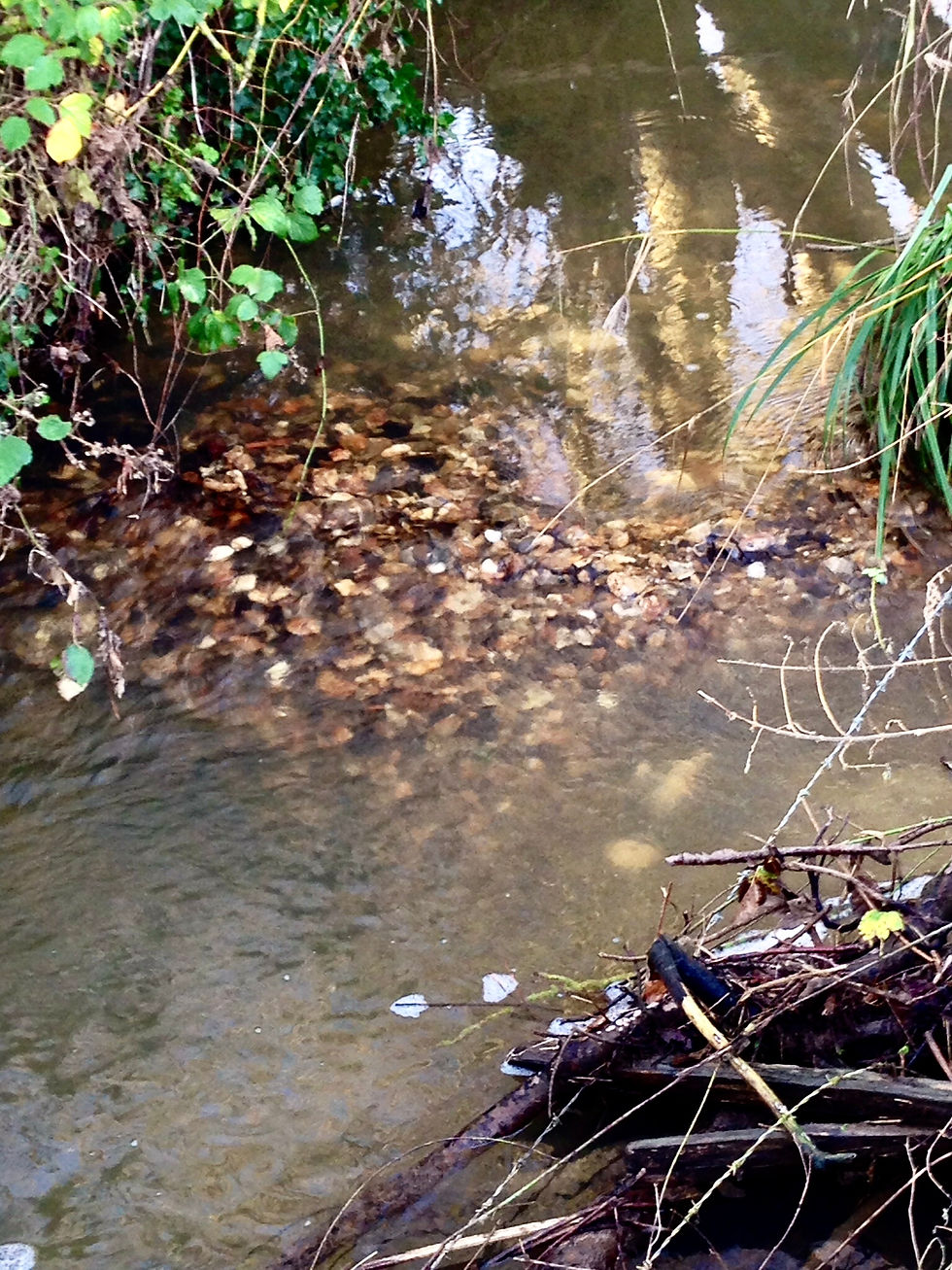Merry Christmas & a Happy Newyear Sea Trout report...I hope?
- stevehomewood.com

- Dec 24, 2021
- 2 min read
These rare and beautiful creatures face all sorts of perils;
from humans to habitat loss, predators to pollution and, like us at the moment,
the invisible microbiological, bacterial and viral enemies.
Around Christmas every year these fish spawn in shallow water in the upper reaches of rivers in Sussex where I and many other volunteers, patrol these streams on a daily basis recording what we see for the Ouse & Adur Rivers Trust who compile records and coordinate responses such as reporting pollution and poachers, clearing barriers of fallen trees and fly tipping, and replacing suitable spawning gravel beds washed away or silted up. Without their good work the fish would not be here at all so do volunteer if you can.
So, just one or two Redds (spawning hollows) spotted by me on my two stretches so far but fingers crossed for the coming days after Christmas. Best wishes to you all and before I go, here are some photos from a previous year’s lucky sighting

Above is a typical Redd. a great pile of stones piled up downstream a few inches from the hollow that a female ( Hen ) Sea trout will deposit her eggs. The stones are just the righht size to allow the eggs to drop between the gaps to a safe place from predators below and also slill be in running water down there even when the river appears, from above, to have almost dried up. They need about 12 weeks, I believe, before they hatch.

Shortly after I photographed the Redd to my delight a Sea trout of about 3lb arrived and rested at the downstream side of the pile of stones. Was this the hen fish that made this hollow? Or was it a male (cock ) fish? Watching from the bank one cannot tell unless you actually see one laying eggs or one upstream of 'her' depositing milt into the Reddf to fertilise the eggs.

And then this happened! A brown trout appeared, long and skinny and about half the weight of the silver sea trout but genetically the same and able to breed with each other. They simply, for many reasons and simply good or bad luck, end up in the fresh water section of the river all year or end up in the tidal stretch and or actually go to sea. In these cases the food is more plentiful and some of these bars of silver right here in Sussex streams can weight over 20lb!
Tune in next week...




Comments